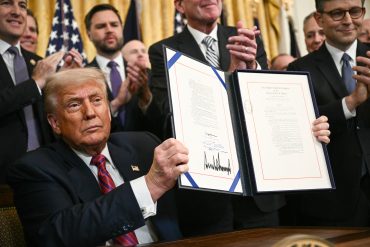
- Cryptocurrency
- Federal Reserve
- Policy & Regulation
Federal Reserve Ends Special Crypto Oversight Program for Banks
6 minute read

Federal Reserve’s crypto oversight change enables banks to launch digital asset services without special regulatory approval
Key Takeaways
- Fed eliminates crypto oversight program – The Federal Reserve terminated its Novel Activities Supervision Program on August 15, 2025, removing special regulatory requirements for banks offering crypto services like stablecoin custody and tokenization.
- Banks gain operational freedom – Financial institutions can now offer crypto-related services, including dollar-backed stablecoin issuance, without prior regulatory approval or enhanced monitoring requirements.
- Regulatory integration replaces isolation – Crypto and fintech oversight moves from specialized supervision to standard banking regulation, signaling the Fed’s increased confidence in managing digital asset risks through traditional frameworks.
Introduction
The Federal Reserve has dismantled its specialized oversight program for cryptocurrency and fintech activities, marking a significant shift toward regulatory normalization in the digital asset sector. The Novel Activities Supervision Program, which imposed additional scrutiny on banks offering services like stablecoin custody and tokenization since 2023, officially ended on August 15, 2025.
This regulatory pivot removes barriers that previously required banks to navigate enhanced monitoring and approval processes for crypto-related services. The decision reflects the Fed’s growing confidence in managing digital asset risks through conventional banking supervision rather than maintaining separate regulatory mechanisms.
Key Developments
The Fed established the Novel Activities Supervision Program in 2023 to address the emerging risks associated with banks’ involvement in cryptocurrency and fintech operations. The program required financial institutions to adhere to additional regulatory guidelines and seek prior approvals for digital asset services.
According to Federal Reserve Board announcement, the program’s termination represents a strategic shift toward integrating novel activity oversight within standard banking supervision. Officials concluded that two years of specialized monitoring provided sufficient understanding of operational and compliance risks in the digital asset space.
The Fed rescinded its 2023 supervisory letter that outlined enhanced monitoring requirements, effectively removing the regulatory framework that crypto advocates criticized as “regulation by stealth.” Banks operating crypto services now fall under regular audit and inspection processes that incorporate standard cybersecurity and operational resilience assessments.

Market Impact
The regulatory change removes significant operational friction for banks seeking to expand their digital asset offerings. Financial institutions can now allocate resources more efficiently toward developing crypto-based products without navigating separate approval processes or enhanced supervisory requirements.
Industry analysts anticipate increased activity in crypto custody, trading, and stablecoin issuance as banks gain operational flexibility. The removal of specialized oversight is expected to reduce compliance costs for tech-focused banks and fintech firms, potentially accelerating institutional participation in digital asset markets.
Similar regulatory adjustments in other jurisdictions have demonstrated measurable market effects. The European Union’s 2023 regulatory rollbacks correlated with increased institutional capital flows into crypto markets, suggesting comparable outcomes may emerge in the U.S. banking sector.
Strategic Insights
The Fed’s decision signals a fundamental shift from treating crypto activities as exceptional risks to managing them within established banking frameworks. This normalization approach suggests regulatory authorities view digital asset risks as sufficiently understood and manageable through traditional supervision methods.
Banks now possess greater strategic flexibility to develop integrated digital asset services, including tokenized payments and stablecoin solutions. The removal of prior approval requirements eliminates a significant competitive disadvantage that previously constrained U.S. financial institutions compared to international counterparts operating under different regulatory regimes.
The regulatory integration approach creates opportunities for more efficient capital allocation and innovation in areas like tokenization services and comprehensive digital asset banking platforms. This structural change positions traditional financial institutions to compete more effectively with specialized crypto service providers.

Expert Opinions and Data
Senator Cynthia Lummis characterized the program’s termination as “real progress toward a level playing field for crypto,” reflecting broader legislative support for regulatory normalization. The Senator’s endorsement underscores political momentum behind integrating digital assets into mainstream financial services.
Crypto advocate Michael Saylor welcomed the regulatory change, noting that the Fed’s decision “clears the road” for enhanced collaboration between traditional banks and crypto firms. Industry observers interpret this development as validation of the sector’s maturation and risk management capabilities.
Some regulatory experts express caution about potential oversight gaps, particularly concerning rapidly evolving areas like decentralized finance and algorithmic stablecoins. Consumer advocates emphasize the importance of maintaining robust risk management frameworks despite the transition to standard supervisory approaches.
Conclusion
The Federal Reserve’s elimination of specialized crypto oversight represents a pivotal moment in digital asset regulation, transitioning from exceptional treatment to standard banking supervision. This regulatory normalization removes operational barriers while maintaining essential risk management requirements through conventional oversight mechanisms.
Banks now operate with increased strategic flexibility to develop and deploy crypto services without navigating separate regulatory frameworks. The change positions the U.S. financial system for deeper integration of digital assets while preserving the Fed’s ability to monitor and manage associated risks through established supervisory processes.








